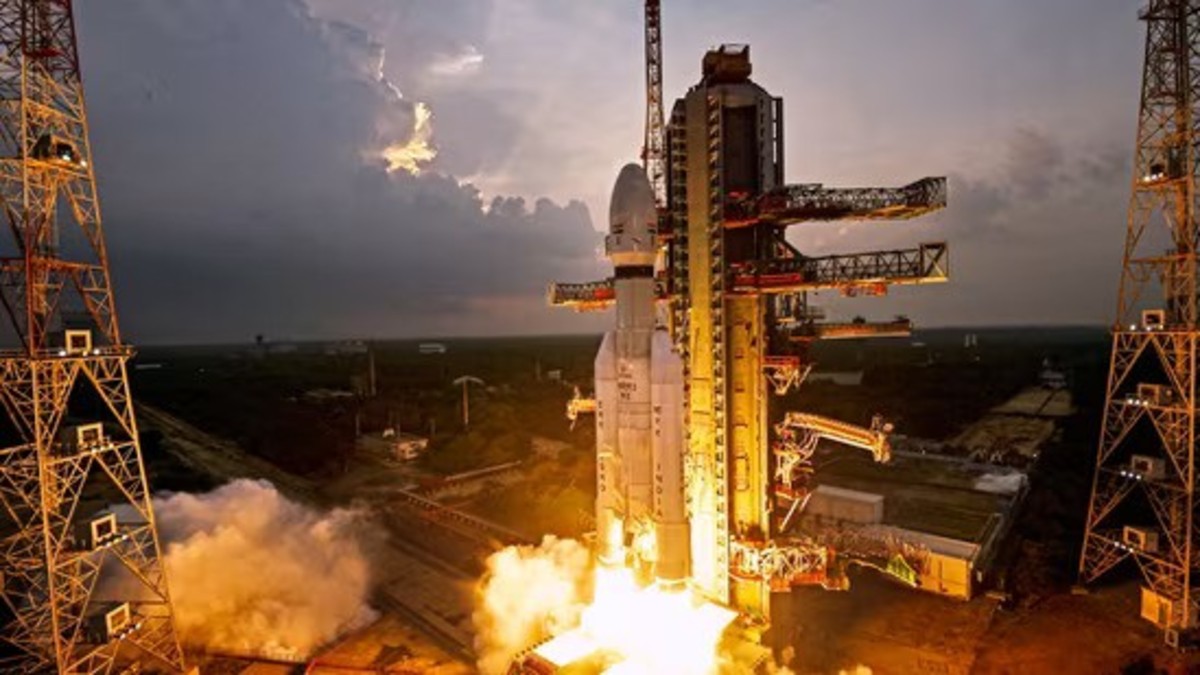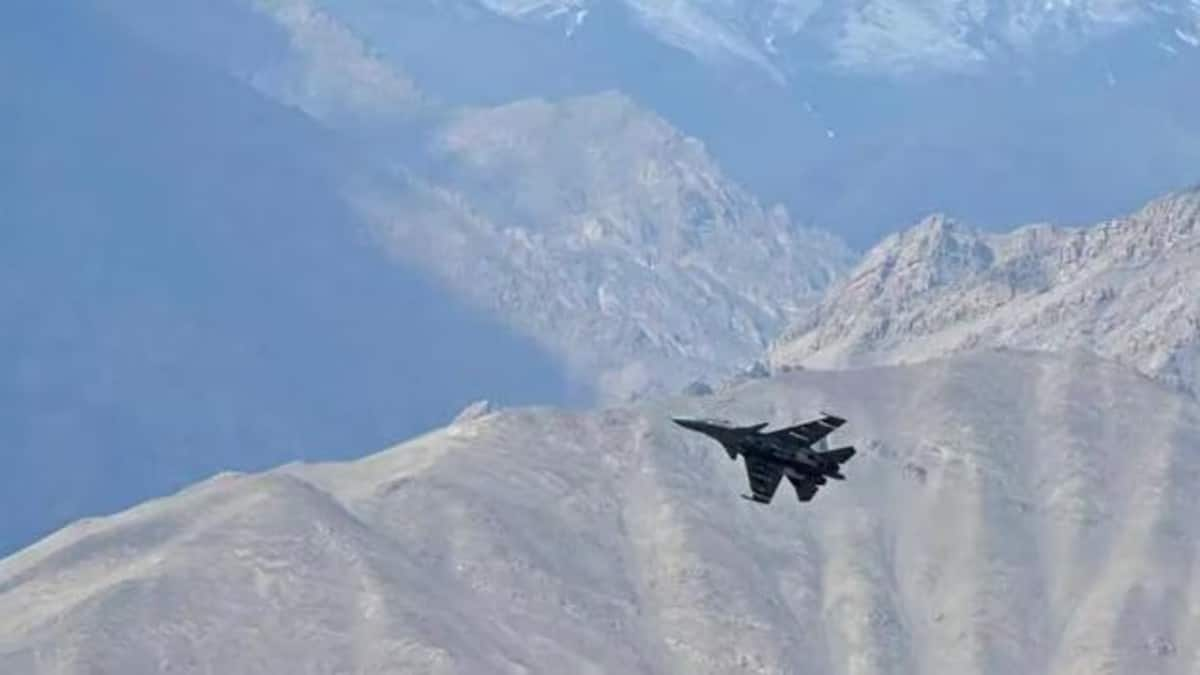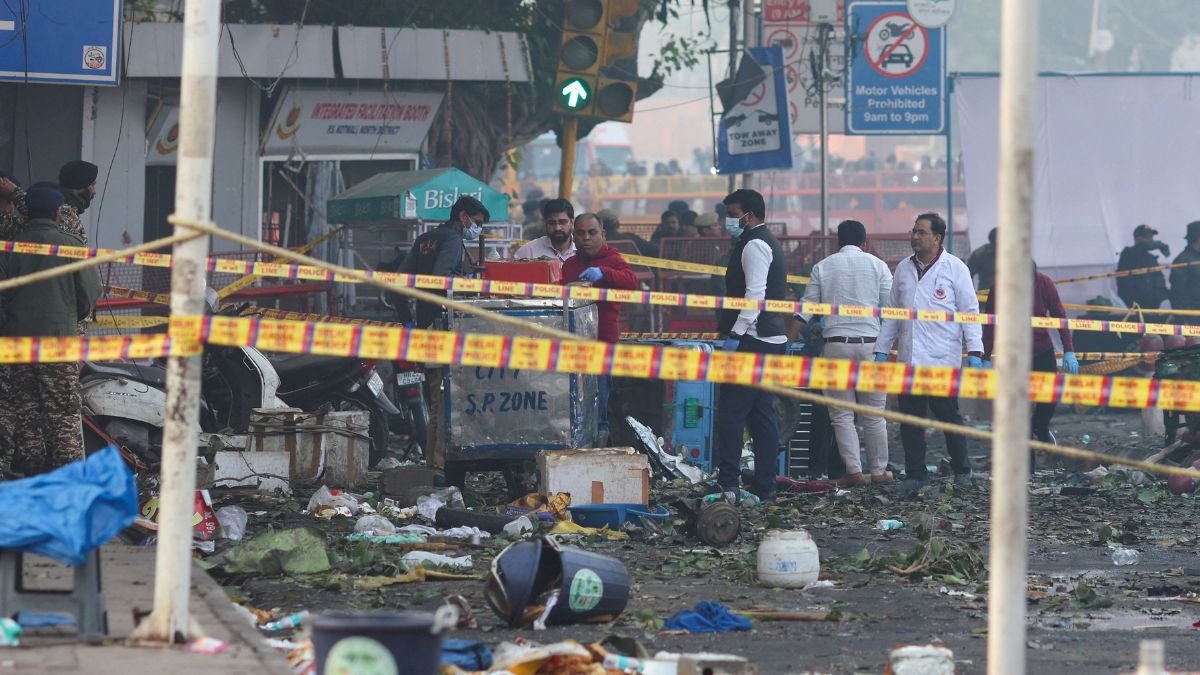When India’s LVM3 rocket—nicknamed “Bahubali” after the warrior-king famed for his titanic strength—thundered skyward with India’s heaviest ever payload of a 4,410 kg CMS-03 satellite, it marked a strategic inflection point. The rocket presented India’s space power that encompasses the full spectrum, including credible space warfare.
While the world celebrates India’s lunar landings and Mars missions, a quieter but equally momentous revolution unfolds in orbit. The country is building formidable military space infrastructure, recognising that the next major conflict may well be decided not on terrestrial battlefields, but in space.
The Bahubali Factor: Networked Warfare Takes Flight
The LVM3 rocket, standing 43.5 metres tall with a lift-off mass of 640 tonnes, embodies India’s heavy-lift ambitions. Its three-stage architecture—combining solid S200 strap-ons, liquid L110 core, and cryogenic C25 upper stage—can deliver approximately 4,000 kg to Geosynchronous Transfer Orbit and 8,000 kg to Low Earth Orbit. But the real significance lies in its payload: CMS-03, codenamed GSAT-7R, replaces the ageing Rukmini satellite and dramatically expands the Indian Navy’s networked warfare capabilities.
Operating across multi-band frequencies—UHF, S, C, and Ku bands—CMS-03 enables secure real-time voice, video, and data transmission between warships, submarines, aircraft, and shore-based command centres across vast oceanic expanses. During the 2014 theatre-level readiness exercise, Rukmini networked 60 ships and 75 aircraft seamlessly. The upgraded CMS-03 extends this capability across a 2,000 nautical mile footprint. That, for example, can span from the Strait of Hormuz to the Malacca Strait. This satellite-enabled integration is the backbone of network-centric operations, compressing decision-making cycles and enabling coordinated strikes across multiple domains—precisely the capability required for modern high-intensity warfare.
The Arsenal of Counter-Space Capabilities
India’s space warfare toolkit extends well beyond communication satellites. The centrepiece is Mission Shakti, conducted in 2019, when a Prithvi Mark-II interceptor destroyed an Indian satellite at 283 kilometres altitude in just over 30 seconds. This anti-satellite weapons (Asat) test, using kinetic kill technology, placed India in the exclusive club alongside the US, Russia, and China with demonstrated anti-satellite capabilities. The missile validated India’s ballistic missile defence technology and sent an unmistakable deterrence signal to adversaries.
Impact Shorts
More ShortsBeyond kinetic weapons, India has developed sophisticated electronic warfare capabilities for space. The country has fielded advanced Satellite Navigation System jammers capable of disrupting signals from China’s BeiDou, alongside GPS, Glonass, Galileo, and Navic systems. These modular jammers, developed by India’s defence research ecosystem with plug-in architecture for future adaptability, represent a direct counter to adversary positioning advantages. India has deployed high-frequency early warning systems, including Samyukta (200 km range), Himshakti (for high-altitude regions), Spectra suites on Rafale jets, and Kali-5000 directed energy weapons along contested borders.
While India’s electronic warfare and jamming capabilities against satellite systems exist, their full effectiveness remains classified. The Defence Space Agency (DSA), established in 2019 and headquartered in Bengaluru, coordinates the development of space warfare strategies, operating signals intelligence, electronic intelligence, communication intelligence, and space-based surveillance systems. The agency released India’s Joint Military Space Doctrine in September 2025, marking formal recognition of space as an independent warfighting domain. It is early warning sensors that India is looking at with most interest. A lot of India’s early warning sensors are likely to be space-based, in the context of the ballistic missile threat environment.
India is also pioneering satellite protection through “bodyguard satellites”—dedicated spacecraft equipped with sensors, propulsion systems for rapid repositioning, and potentially countermeasure technologies to monitor and defend high-value assets from hostile actions. With plans for operational deployment by 2026 under a Rs 27,000 crore programme, these guardian platforms represent a proactive defence posture in an increasingly contested orbital environment.
Five Pillars of Achievement
India’s space and strategic missile capabilities rest on five landmark achievements that demonstrate both technological prowess and cost-effective innovation. First, the Chandrayaan-3 mission in 2023 made India just the fourth nation to land on the Moon and the first to achieve a soft landing near the lunar south pole. The mission validated critical technologies, including precision landing algorithms, enhanced propulsion systems, and robust lander design through larger landing zones and sturdier legs. All of these have military spin-offs.
Second, the Mars Orbiter Mission (Mangalyaan), launched in 2013, made India the first Asian nation and the first space agency globally to reach Mars orbit on its maiden attempt. Operating for over eight years—far beyond its six-month design life—at a cost of just $74 million, the mission cost less than many Hollywood films yet delivered crucial atmospheric and surface data.
Third, the Aditya-L1 solar mission, launched in 2023, positioned India’s first dedicated solar observatory at the Lagrange Point L1, 1.5 million kilometres from Earth. The spacecraft’s seven payloads examining the Sun’s photosphere, chromosphere, corona, and solar wind provide uninterrupted solar observations crucial for space weather prediction and protecting satellite infrastructure.
Fourth, the Agni-V intercontinental ballistic missile, with a range exceeding 5,000 kilometres (and reportedly extendable to 7,000-8,000 km), brings the entire Asia-Pacific region within striking distance. Successfully tested multiple times since 2012, the road-mobile, canister-launched missile demonstrated MIRV (Multiple Independently Targetable Re-entry Vehicle) technology in March 2024 under Mission Divyastra. The defence minister recently hinted that Agni-VI, with projected ranges between 9,000 and 12,000 km (potentially 14,000-16,000 km with lighter payloads), is on the way.
Fifth, the Navigation with Indian Constellation (Navic), a regional navigation system, provides positioning accuracy better than 20 metres across India and 1,500 km beyond its borders through a constellation of eight satellites. Developed following dependence on US GPS during the Kargil conflict. Navic offers both civilian Standard Positioning Service and encrypted Restricted Service for military applications, with second-generation satellites adding L1 frequency for greater interoperability.
The Acceleration Imperative
Despite these achievements, India faces a stark reality: it must dramatically accelerate satellite launches. The country currently conducts fewer than ten launches annually but aims for fifty by 2029. This expansion is crucial because India’s military satellite constellation stands at just 12 platforms, far below operational requirements. The government approved the SBS-III programme in 2024—a Rs 26,968 crore initiative to launch 52 surveillance satellites, with 21 built by Isro and 31 by private companies, creating a 78-satellite military constellation by 2031.
Private Sector: The New Vanguard
India’s space ambitions increasingly rely on a vibrant private sector ecosystem. Over 200 space startups have emerged since the 2020 Space Sector Reforms, leveraging Isro facilities and supported by In-Space’s regulatory framework and a Rs 1,000 crore Venture Capital Fund. These companies are pioneering cost-effective solutions that exploit India’s inherent economic advantage—the ability to deliver space missions at a fraction of global costs.
Companies like Skyroot Aerospace, founded by former ISRO scientists, launched India’s first private rocket, Vikram-S, in 2022. Agnikul Cosmos achieved a world first by test-firing an entirely 3D-printed rocket engine, Agnilet, backed by investors including Anand Mahindra. Pixxel operates a subscription-based Earth observation service using hyperspectral imaging satellites, having raised significant funding from Alphabet Inc. and Lightspeed Ventures. Dhruva Space provides end-to-end satellite solutions from manufacturing to ground station services. It’s a long list.
These startups complement Isro’s work through NewSpace India Limited, the public sector undertaking established back in 2019 to scale private participation in Small Satellite Launch Vehicle production, PSLV manufacturing through industry, and technology transfers. The collaboration model—combining Isro’s technical expertise, DSA operational alignment, and private sector innovation in AI-driven analytics and modular design—promises faster deployment cycles and reduced costs.
One Among Major Powers
India’s space economy, currently around $8 billion, is projected to reach $44 billion by 2033, capturing 8 per cent of the global market. India is now ready to leverage proven satellite manufacturing and cost-efficient launch systems delivering missions at 10-15 per cent of Western costs.
Compared to China’s aggressive space militarisation—operating over 200 operational satellites and conducting 34 launches in 2019 alone—India has pursued a more measured approach. Yet India possesses critical technologies that close adversaries cannot ignore. The planned expansion to 78 military satellites by 2031 would provide unprecedented regional surveillance dominance.
However, significant gaps remain. India lacks comprehensive around-the-clock in-orbit monitoring capability and lags in cutting-edge counter-space systems like space-based lasers, jamming-resistant satellites, and AI-powered Space Situational Awareness. Isro conducted 23 collision avoidance manoeuvres in 2023 alone, highlighting vulnerability to space debris and potential hostile actions.
The DSA must evolve into a full-fledged Space Command with enhanced manpower, ground infrastructure, and space-based assets to secure India’s orbital interests. For this, India must substantially increase space funding to match the strategic imperative. The Department of Space received Rs 13,416 crore in Budget 2025-26, a modest 2.86 per cent increase. That needs liftoff, especially as development of Bharatiya Antariksh Station and human spaceflight through Gaganyaan require significantly expanded budgets.
The next conflict—whether in high Himalayan passes or across the Indian Ocean—will be decided by whichever side maintains superiority in space. Resilient satellite constellations will enable kill chains measured in minutes rather than hours. India must prioritise technology spending for the final frontier.
In Indian traditions, Lord Shiva, in his form as Akashanatha (Lord of Ether), governs the cosmic space-time dimension. This reminds us that space is not ancillary but central to cosmic order and to Indian security.
India is preparing earnestly, realising that opening salvos of the next war may occur not with artillery barrages but with the silent elimination of satellites 36,000 kilometres overhead. India’s cost advantages, technological capabilities, and strategic imperatives align perfectly—provided policymakers match ambition with resources. The heavens await India’s mega space play.
(The writer is a senior journalist with expertise in defence. Views expressed are personal and do not necessarily reflect those of Firstpost.)


)

)
)
)
)
)
)
)
)



